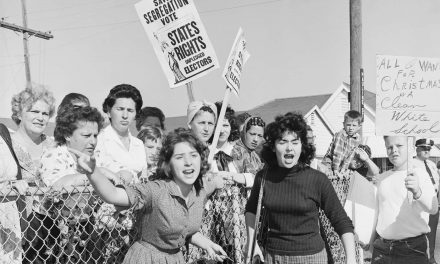
“Since the 2008 financial crisis, the Black homeownership rate has fallen behind; and the gap between Black and white homeownership is now wider than it was more than 50 years ago, right before the 1968 Fair Housing Act was enacted to create equal housing opportunities for minorities, according to a report by the Urban Institute.” – Forbes Magazine
“Racialized housing policies have robbed generations of Black households of wealth-building capacity over the years. It has robbed them of the equity and the wealth that could have been passed on to help their children and grandchildren buy first homes.” – Michael Stegman, a nonresident fellow at the Urban Institute.
Many of us have heard about the homeownership gap between Blacks and Whites in America over the past several years. Over seventy percent of Whites in this country own their homes but just over forty percent of Blacks are in that same position. The Black homeownership rate is only slightly higher today than it was in 1968 when the Federal Fair Housing Act was passed. We’ve seen very little progress in closing the gap. This gap is the main component in the wealth gap between the two groups. Most wealth accumulated over the course of our lives is in the value of the homes we own. With such large differences between Black and White homeownership it’s easy to see why the wealth gap is huge. The average White family has about ten times the wealth of a Black family. This gap is similar across a wide spectrum of socioeconomic classes.
Most conversations about this homeownership gap has been centered on past policies like redlining and the use of racially restrictive covenants by Whites to keep Blacks and others they considered “inharmonious racial groups” out of their neighborhoods. Decades of federal, state and local laws and policies made it easy to create a two-tier system of homeownership. This two-tier system made it exceptionally easy for Whites to become homeowners beginning in the 1930s while at the same time placing huge barriers in the way of Blacks who wanted to live the same “so-called” American dream.
Recently I came across some data that really opened my mind to a new way of looking at the homeownership gap. This data provides a breakdown of homeownership based on age groups. Although the total homeownership rate in 2015 (Whites 71.1%, Blacks 41.2%) is important to understand, it only tells part of the story. Looking at the different rates across age groups makes it readily apparent that depending on when you were born, your chances of being a homeowner are significantly different.
For all Americans in the 25-34 year-old age cohort the homeownership rate in 2015 was 37%. For Whites that rate is 45.6% and just 15.5% for Blacks. For those aged 35-44 the gap is wide as well (66.5% for Whites and 33% for Blacks). Looking at 45-54 year-olds 68.4% of Americans are homeowners (75.9% of Whites, 46% of Blacks). Americans age 55-64 have a 75% homeownership rate (80.6% of Whites, 54% of Blacks).
The highest homeownership rate for Americans is among 65-74 year-olds (79.7%). Among Whites in this age cohort, 84.1% are homeowners, the highest among any age group. For Blacks of the same age, only 60.4% own their homes. Nationwide 79% of Americans aged 75-84 are homeowners (82.3% of Whites, 65.2% of Blacks). The highest homeownership rate for Blacks is in the 85 or older group. In that group 69.2% of all Americans are homeowners, 70.2% of Whites are and just 65.3% of Blacks are.
Looking more closely at the data shows that two age cohorts for Whites own at 70-70.9%. Three separate age cohorts for Whites own at a rate exceeding 80%. The lowest age cohort ownership rates over age 25 for Whites are the 25-34 group (45.6%) and the 35-44 group (66.5%). Every age cohort for Whites exceeds the highest homeownership rates for the highest group of Blacks except the 15-24 and 25-34 year-old group of Whites. What this means simply, is that with the exception of Whites 15-34, every group of Whites owns their homes at a higher rate than the highest rate for Blacks in their highest ownership group. Only 65-74 year-olds, 75-84 year-olds and 85 and older Blacks own their homes at a rate exceeding 60%.
As I looked at the data and began to think about what it means beyond the numbers, I realized that homeownership is in many ways based on when you were born. I looked closely at those born during the time when the federal government launched the Federal Housing Administration (FHA) and the National Housing Act in 1934. That age cohort born from 1926-1935 gives us a first glimpse at the long-term impact of discriminatory housing policies.
Those policies, created a new mechanism allowing easier access to homeownership in the 1930s than at any previous time. These new mortgages giving people up to 20 years to pay off their loans and with significantly reduced down payments permanently changed the prospects of homeownership. Because these loans were issued in an intentionally discriminatory manner it left Black people in the lurch while propelling Whites to future homeownership, growing equity and generational wealth that is still quite visible today. The new, amortized, federal government backed, shorter term mortgages went primarily to White people. This was the first time when homeownership became widely attainable and built a pathway toward an expectation of owning a home as a part of the American dream. It built on the Homestead Act policies which gave nearly all homestead to Whites for next to nothing.
For decades homeownership was an attainable dream for Whites but much less so for others in this country. The FHA intentionally created policies in their loan underwriting manual that made racial occupancy of neighborhoods an incredibly important component of who they gave loans to.
Looking at the 1936-1950 manuals gives good evidence of their intent to make homeownership through FHA loans nearly an exclusive gift to Whites. When giving instructions to those who evaluated the feasibility of FHA loans, the organization that was supposed to make homeownership available to all, told evaluators to discriminate based on race.
Section 229 of the 1936 underwriting manual said this:
“The Valuator should consider carefully the immunity or lack of immunity offered to the location because of its geographical position within the city. Natural or artificially established barriers will prove effective in protecting a neighborhood and the locations within it from adverse influences. Usually the protection against adverse influences afforded by these means include prevention of the infiltration of business and industrial uses, lower-class occupancy, and inharmonious racial groups.”
These words set the stage for creating a two-tier system of homeownership as well as the use of physical “barriers” to keep neighborhoods segregated by race. Of course these “inharmonious racial groups” were almost always non-whites and recently arriving immigrants. Eventually those newly arriving White immigrants were taken out of “inharmonious” status and gained access like other Whites.
These policies led to more than 98% of all FHA loans form 1932-1962 going to White families. In Milwaukee in 1950 not a single FHA loan was granted to a person of color. Having near exclusive access to loans meant having near exclusive access to wealth accumulation. As the suburban enclaves were being built in the 1950s, 85% of all homes built in the country were in those communities.
The GI Bill guaranteed home loans for White GI’s but largely left Blacks out. In addition to that the free education benefits in that laws moved Whites into better jobs and the ability to buy nicer homes. In Milwaukee no VA loans were given to Black GI’s in 1950 but over 3,000 White GI’s had them.
People born during the years 1926-1935, the years leading up to the Great Depression, but also the latter years of the “roaring twenties” had vastly different opportunities to purchase homes based on race, not just then, but throughout the remainder of their lives. By the time they became adults and settled into employment the doors of opportunities were widening for Whites and remained mostly shut for Blacks. The homeownership chasm between Blacks and Whites born in these years shows the first signs of the built-in advantage Whites have enjoyed due to systemic racism and institutional factors that made this possible.
When looking at this age cohort during the years when they were 55-64 years of age, nearing retirement, analyzing the gaps between homeownership rates is instructive. Whites at that age from this cohort had a homeownership rate of 84.4% and only 62.1% of Blacks in this group were homeowners by that time in their lives. This gap is indicative of the long-term impacts of systemic housing discrimination by lenders, governments, insurance companies and realtors.
The National Association of Realtors required discrimination in their Code of Ethics from 1924 through 1950 by stating the following:
“A Realtor should never be instrumental in introducing into a neighborhood a character of property or occupancy, members of any race or nationality, or any individuals whose presence will clearly be detrimental to property values in that neighborhood.”
These policies of steering people to segregated neighborhoods played a huge role in the segregation we see today and the consequential differences in home values based on race all these years later.
Those “roaring twenties” saw widespread anti-black violence including dozens of riots across the country where Black communities were attacked, and partially or fully destroyed. Lynchings were still a common site across the country, not just in the South.
In the years after 1950 the language in the code of ethics changed but left the same discriminatory treatment in place.
“A Realtor should never be instrumental in introducing into a neighborhood a character of property or use which will clearly be detrimental to property values in that neighborhood.”
Discrimination was built into the system of home buying. Not only were redlining maps, officially called residential security maps, infringing on people’s ability to become homeowners but White citizens, neighborhood associations and developers made becoming homeowners exceptionally difficult for Black people. They could become homeowners but not through the traditional route enjoyed by a vast majority of Whites.
The bank mortgages were not available for the most part in redlined neighborhoods. In the 239 cities where these maps were drawn, a Black neighborhood was guaranteed to be redlined. Those who wanted to purchase homes in those sections of town, had few choices except to buy using a land contract. Whites moved out of those neighborhoods to gain access to traditional loans.
These land contracts were similar to a pay-as-you-go system of purchasing. As you paid the contract down, you built no equity as those with mortgages did. One missed or late payment was all it took to lose the property and all of the money you’d paid up to that date. Many Blacks were forced to buy in this way and lost “their homes” to this legal but morally bankrupt system.
Many people who live in this country take it for granted that by the time they approach retirement they will be homeowners, and will be enjoying the fruits of the equity in their homes. They will pay off debts, give down payments to their children for their first homes and make repairs to keep their home values high using home equity loans.
Whites in this age group having a much higher homeownership rate than Blacks is a reflection of what long-term impacts of discrimination in the housing market is. Another age cohort, those born from 1936-1945 have similar homeownership gaps. In this age cohort, by age 55-64, only 63% of Blacks are homeowners while 84.5% of Whites own their homes.
Similarly, those born in the post-WWII era 1946-1955 have large differences in homeownership rates. By age 55-64 in this cohort, 82.4% of Whites were homeowners and just 57% of Blacks herein 2010.
In 1970-2010 every cohort of Whites age 35-74 had homeownership rates above 70%, while not a single Black age cohort did. From 1980 through 2010 Whites over the age of 45 were nearly guaranteed to be homeowners with almost all of them seeing homeownership rates above 80% with few exceptions (45-54 year-olds in 2010, 78%, 65-74 year-olds in 1980 75.8%).
For Black Americans the chances of being homeowners are far lower. It was not until 1990 that Blacks age 55 and older saw homeownership rates above 60% with one exception (in 2010 55-64 year-olds were at 57%).
If these patterns continue, and there are clear signs they will, the future of wealth building through homeownership for Blacks will continue to lag far behind Whites. In 2015, Blacks aged 25-34 only had a homeownership rate of 15.5% while their White peers were homeowners at a 45.6% rate. Similarly Blacks approaching retirement age, 55-64 year-olds only had a homeownership rate of 54% in 2015 while 80.6% of Whites of that age were homeowners.
As America continues the ridiculous arguments about the merits of systemic racism, and the solutions to housing issues in Black communities like Milwaukee focus on “low income” apartments, the gaps in home ownership continue to exacerbate the wealth gap.
In 1980, 25-34 year-old Blacks had a homeownership rate of of 31% and that rate dropped to just 15.5% by 2015. Likewise 48.2% of 35-44 year-old Blacks in 1980 owned their homes but only 33% did so in 2015. There were drops for Whites as well but each of those groups 25-34 year-olds (45.6% in 2015) and 35-44 year-olds (66.5% in 2015) were still way ahead of their Black peers.
Part of the argument that people who don’t believe in systemic racism make is, that if Blacks would make the same choices as Whites, then the gaps would not exist. This line of reasoning pretends that historical forces (ie. racist White policymakers) have never existed.
Taking a longitudinal look at housing issues tells me that clearly we are moving in the wrong direction. Housing as a wealth producer has continued to be significantly less accessible for Blacks and the harms are long-term and produce ongoing challenges.
Each cohort of Blacks including 15-24, 25-34, 35-44, and 45-54 year-olds have less than half of their peers being homeowners. This is only true for 15-24 and 25-34 year-old Whites, which tells me that the future is not bright for overcoming these historical issues. Those past policies and practices combined with continuing new forms of redlining by insurance companies, banks and developers will make it nearly impossible to fix the damage that’s been done.
Trying to fix this while discrimination is ongoing, is the equivalent of trauma surgeons attempting to do surgery on a person injured in a car accident while the accident is happening.
In light of what has been happening since the housing bubble burst in 2008, including more foreclosures, tighter credit markets and the unknown impacts of the economic crisis due to the pandemic, I feel that the crisis will only be worse once we have the data to look at by age range at some point in the near future.
When I first looked at the data I did not initially see how problematic the issues were. Now I do. Current solutions that are popular will not solve this problem. There is deep learning to do and deep thinking to do to resolve these issues.
“Most Blacks know that past discrimination continues to influence contemporary struggles to accumulate assets because wealth is inherited and passed down across generations. In recent years, moreover, changes in the tax code have further skewed opportunities and life chances along racial lines by giving favored treatment to those forms of income most likely to represent the fruits of past and present discrimination like inheritances and capital gains, while lessening the value of income gained through work. The living legacy of past discrimination combines with the impact of contemporary discriminatory practices in mortgage lending, real estate sales, automobile credit financing, and employment to impose artificial impediments against asset accumulation among African Americans.” – George Lipsitz, “The Possessive Investment in Whiteness”














